The symbolism of the newly renovated Pyramid in Tirana, Albania, might at first seem straightforward. Unveiled in mid-October, just as leaders of the European Union’s largest nations arrived in the city to discuss when Albania and other Balkan states might become members of that organization, Tirana’s youthful mayor, Erion Veliaj, declared that the revamped Communist-era monument, formerly “a house of oppression and dictatorship,” is now “a house of freedom.”
The history of the Pyramid, however, is far from simple. Called “Piramida” by locals, the building was originally completed in 1988 as a memorial to Albania’s longtime dictator, Enver Hoxha. The 70-foot-tall structure, part shrine, part Constructivist sculpture, is not technically a pyramid. It is generally circular in plan, reading from the rear as a ribbed drum. But from the front, with a portico formed from splayed diagonal concrete beams supporting steeply inclined triangular planes of stone cladding, it is legibly pharaonic—a primitive image of power, expressive of Hoxha’s domination of all political and social life in Albania during his four-decade regime. After the fall of Communism in 1991, the statue of Hoxha it had contained was demolished, and the building was used variously as an impromptu exhibition space, a nightclub, a radio station, and even a NATO base. But nothing stuck. Lacking any long-term purpose, the structure slowly decayed: it was frequently vandalized, the glazing broken, and the concrete began to deteriorate. The building was taken over by the homeless.
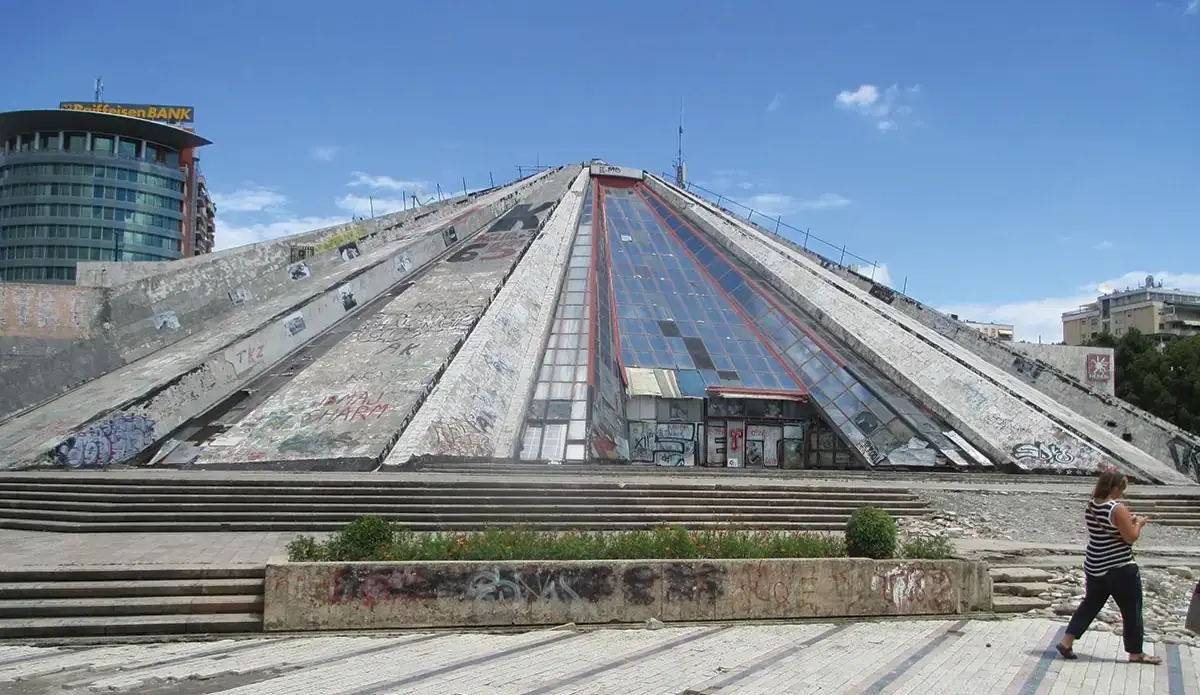
After the fall of Communism, the Pyramid deteriorated. Photo © Avishai Teicher, via Wikimedia Commons, click to enlarge.
It wasn’t until 2017 that the city government came by the funds to convert the Pyramid into a school. The Dutch practice MVRDV, already working in Tirana, won the design competition with a simple proposal: retain the concrete shell and leave it open to the public and, partially, to the elements, then insert new structures inside it. The old ground floor, where the statue had once stood, would be removed. Previously hidden back-of-house entrances in the former basement would be enlarged, creating a new double-height ground floor open on four sides. The concrete structure—including the series of radial elements that rise to a ring beam—has now been repaired and encapsulated in thick white polyurethane paint. Skylights have been reglazed and new fixed-glass louvers added to the portico.
On the outside, the building now has 14 sets of concrete staircases that cover the structure and lead up to a small platform encircling the central skylight. The Pyramid was public in the days of Hoxha, but the public was subservient and passive. Now there is a different relationship with visitors: the Pyramid is open at ground level and on the roof providing views to the city around it. Most strikingly, MVRDV, to inhabit the old shell, has designed a four-story irregular assemblage of concrete climate-controlled boxes. Each volume is about 13 feet high and between 19 feet and 46 feet on a side. They are almost exclusively given over to the new technology school for teenagers run by TUMO, an Armenian educational nonprofit, and have been stacked in such a way that their roofs become balconies and gathering spaces for students.
The boxes are an interesting strategy. In total, 45 of them occupy both the building and the surrounding landscape, with most of the exterior volumes intended as spaces for technology start-ups, the farthest some 200 feet from the base of the main building. One larger, green box, located by the main road, has been given over to the EU-funded College of Europe, where Albanians can earn a master’s degree in European Transformation and Integration. It is a colorful, cheery, but slightly disconcerting move, given that the range of colors calls to mind the Google logo. It is all very deliberate, a signifier that one regime has been given over to another.
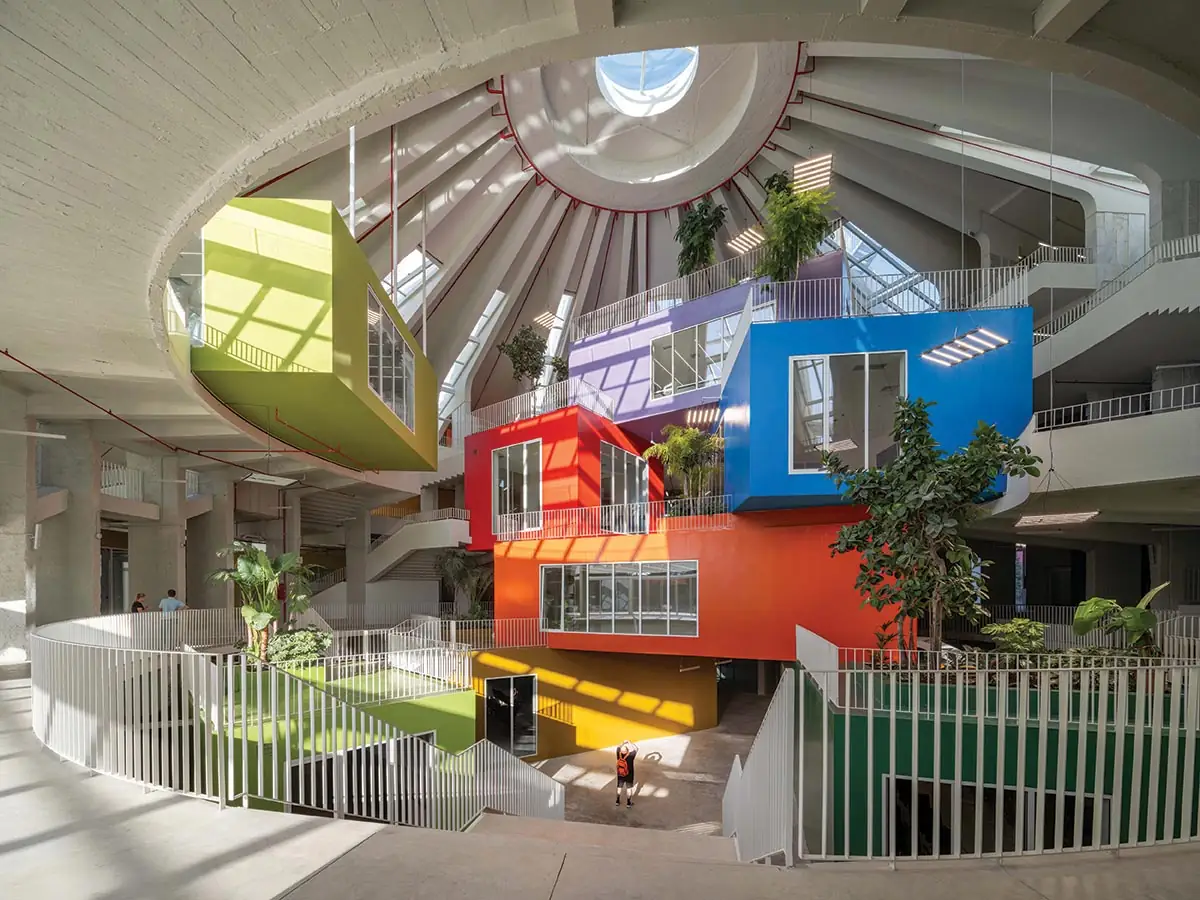
The now-renovated structure includes an irregular stack of brightly colored volumes. Photo © Ossip van Duivenbode
And yet, at a deeper level, there is a more subtle symbolism at work. Although the pyramid was conceived in the last years of Hoxha’s rule, with the aid of his architect daughter, Pranvera, it was finally completed in a strange interregnum: three years after the dictator’s death but three years before the first multiparty elections to be held in Albania in over seven decades, an event that began the exhilarating, and occasionally violent, process of dismantling the totalitarian state. Remarkably perhaps, the Pyramid is locally associated as much with the chaotic period of transition after 1991 as with Hoxha’s reign. A 2015 study determined that, although Tirana’s citizens had no desire to return to the days of dictatorship, they wanted to keep the structure. The Pyramid’s slopes had long been co-opted by local children, who treated it as one of the world’s longest, steepest, and very likely most dangerous slides. A small section of inclined roof surface has been retained as a slide on the renovated building.
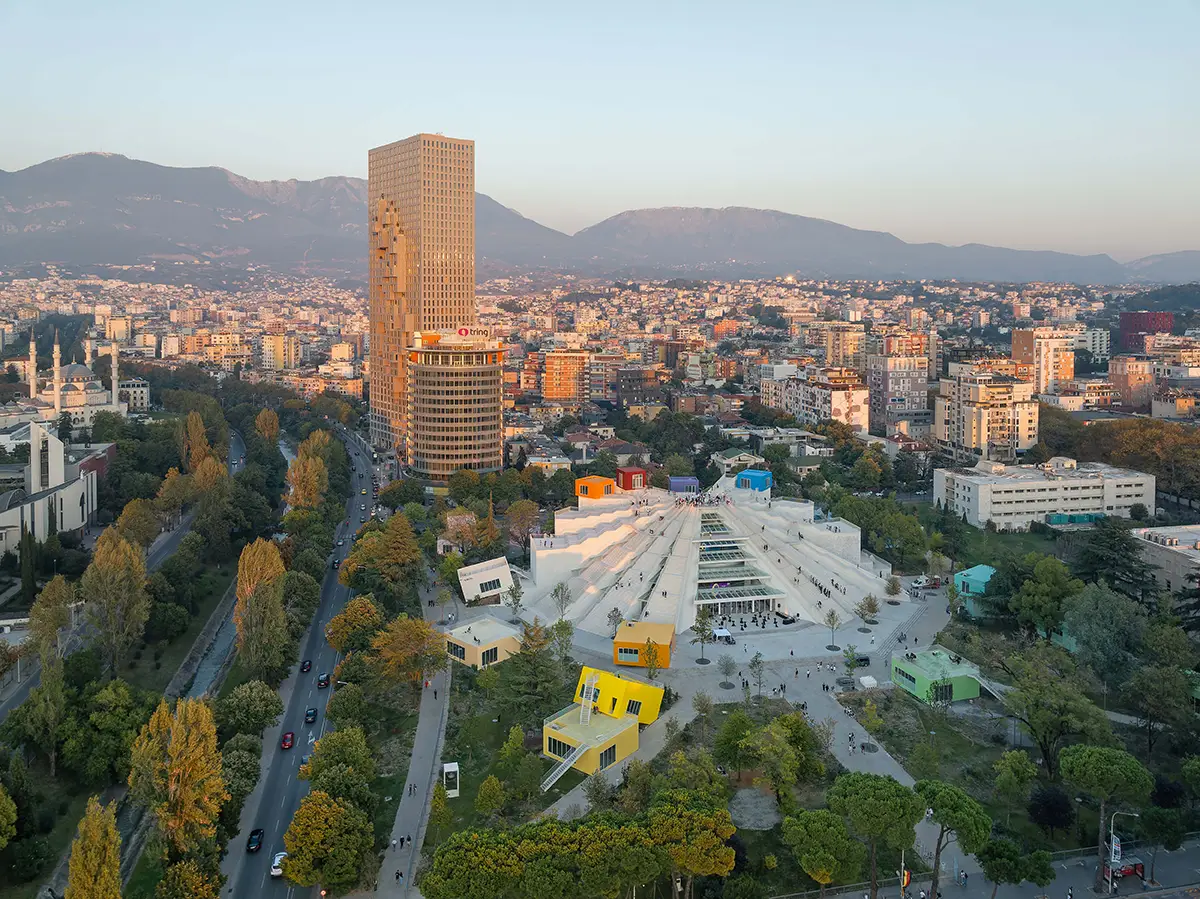
Photo © Ossip van Duivenbode
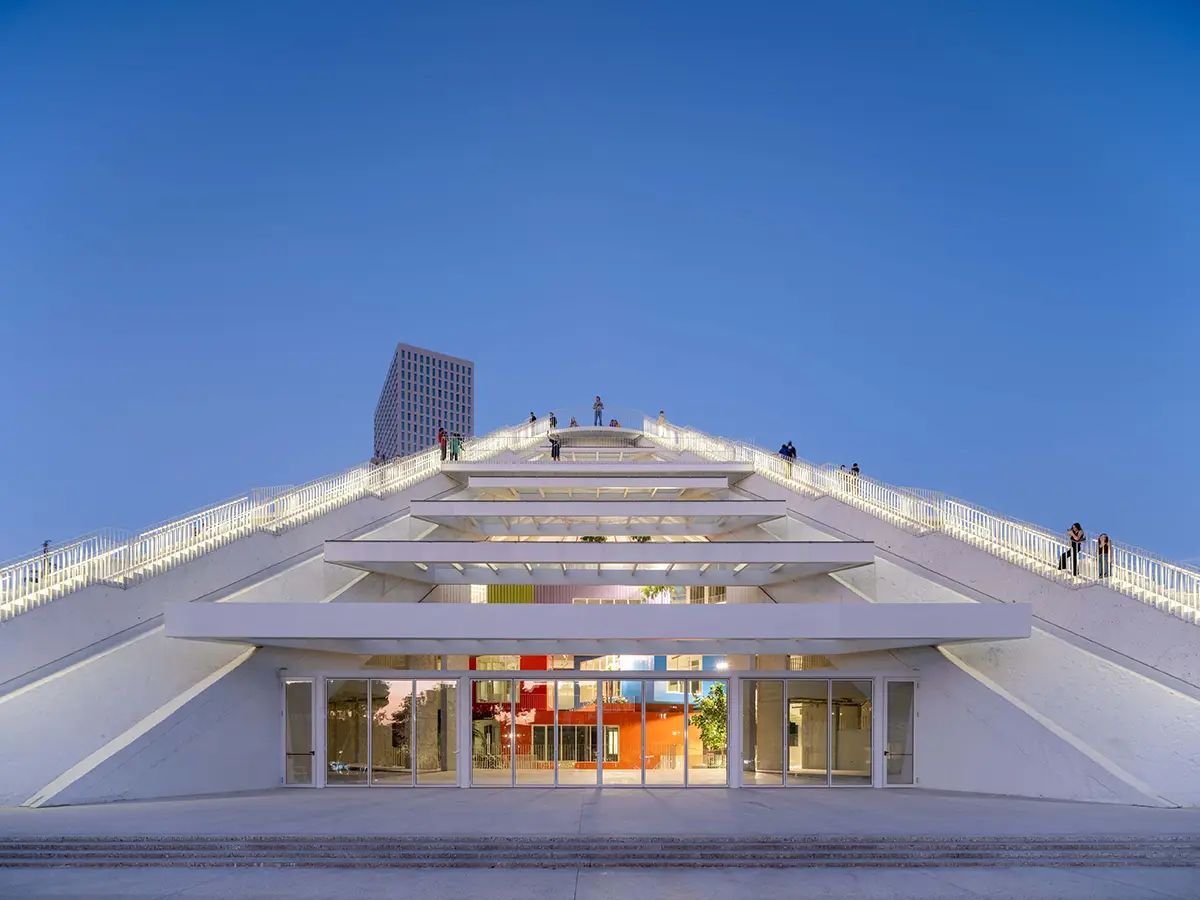
Photo © Ossip van Duivenbode
It is to this in-between period—the time when local people co-opted the building—that the haphazard array of boxed rooms speaks. In place of a home for squatters, some new form of inhabiting the structure was needed if it was to be retained. Renovations of degraded buildings do not come cheap, after all, and it wasn’t until the Armenian educational foundation funded a large part of the $12.9 million construction cost that saving it was possible. Ultimately, the technology school housed within the cube assemblage is secondary to the Pyramid’s new symbolism for a nation coming to terms with its past. MVRDV’s refurbishment works as a sculpture, an urban activator, and a memorial to a long and complicated history, rather than merely as a piece of conventional architecture.
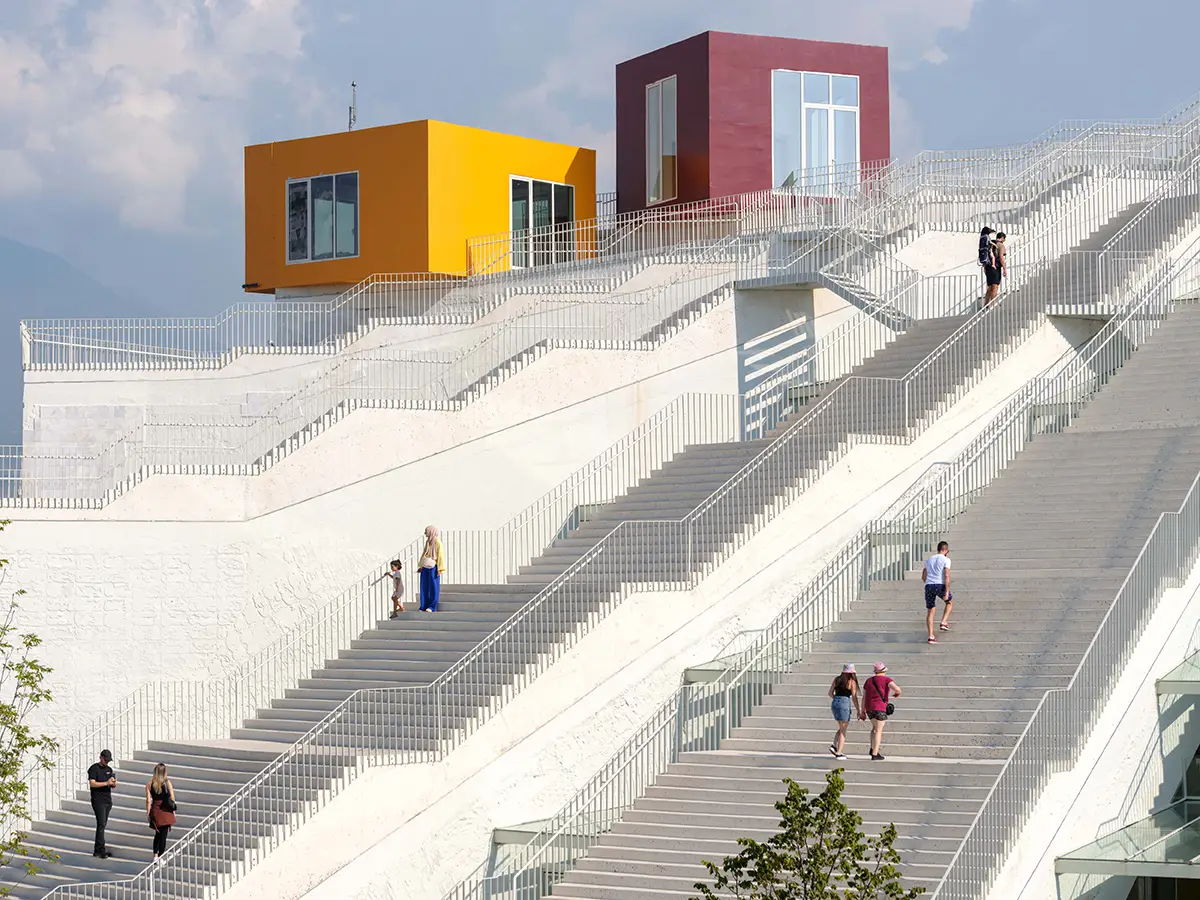
Photo © Ossip van Duivenbode
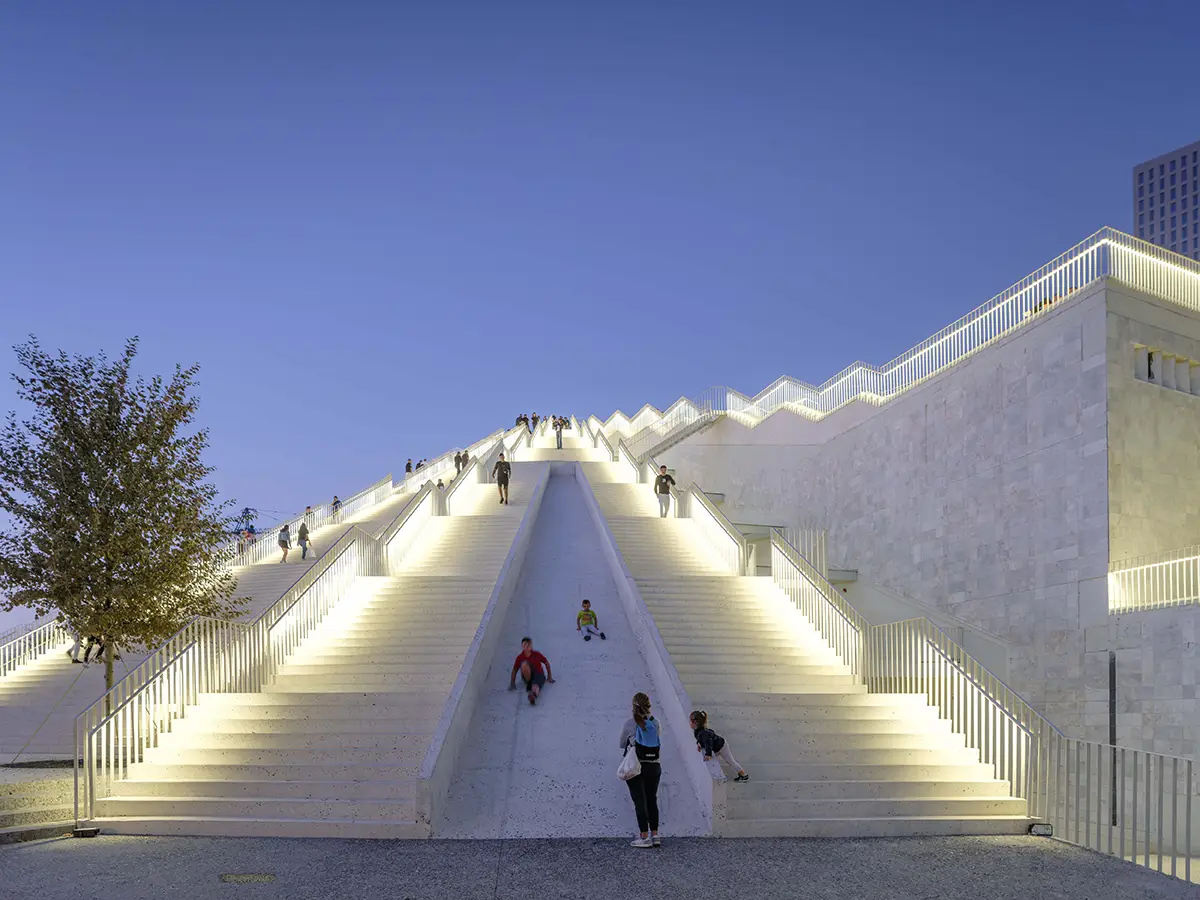
Photo © Ossip van Duivenbode
In the years immediately following Hoxha’s death, Ismail Kadare, considered Albania’s greatest living writer, wrote a political parable called The Pyramid. Ostensibly set in ancient Egypt, but with a nod to the Hoxha memorial, which was almost complete when Kadare began writing, the novel was a test of a dawning democracy. It confounded the censors by apparently telling a story of the construction of the older pyramids, but with veiled analogies to Albania’s predicament. Kadare’s book focuses on the great squares of stone that constituted these symbols of total power and explores how political systems are built by those they oppress. It asked Albanians whether they wanted to maintain the structures of totalitarianism or not.
The revamped Pyramid demonstrates that structures can be maintained, but their significance transformed. In between the rhetorical symbolism of the old regime and the new one, the re-inhabited memorial acknowledges other histories, other meanings.



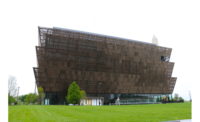

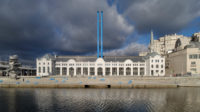
Post a comment to this article
Report Abusive Comment